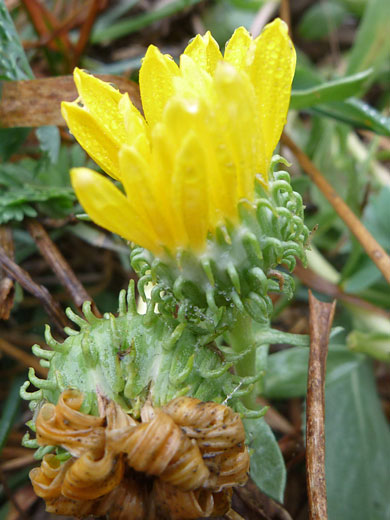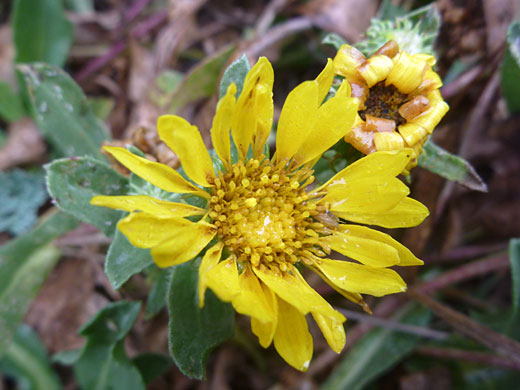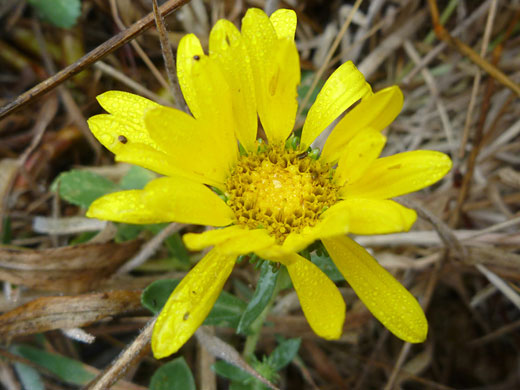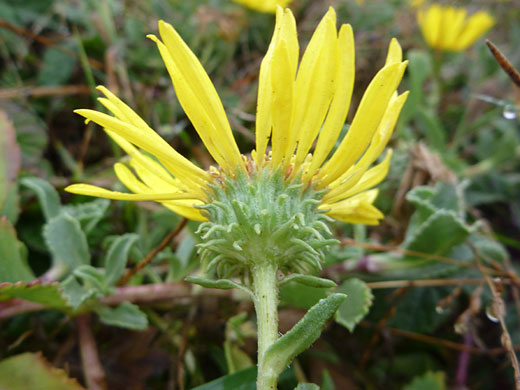
Grindelia stricta var platyphylla, Point Reyes Lighthouse, Point Reyes National Seashore, California
Common name:
Oregon gumweed
Family:
Scientific name:
Grindelia stricta
Main flower color:
Range:
Coastal areas of the Pacific states
Height:
Up to 6 feet
Habitat:
Coastal bluffs, sand dunes, salt marshes
Leaves:
Lanceolate to oblong, thick, serrate or entire edges
Season:
May to December
Characteristics of grindelia stricta include the fine teeth along the leaf edges (other species have larger teeth), the woody stem bases, the thick, fleshy leaves and the location - the plant inhabits coastal areas including dunes, bluffs, estuarine margins and marshes. Leaves are similar in size at the base of the stem and all the way to the tip; they are colored green to greyish green, and are thick and fleshy. Plants branch readily, often forming tangled clumps.
This species has rather more ray florets than others in the genus, ranging from 16 to 60, up to one inch in length. The light green phyllaries are flat in cross-section, wider at the base, tapering gradually. They may be hairless or covered by light, tomentose hairs. Their orientation ranges from upwards pointing to recurved to coiled. There are three varieties (angustifolia, platyphylla, stricta), differing in leaf and phyllary characteristics.
This species has rather more ray florets than others in the genus, ranging from 16 to 60, up to one inch in length. The light green phyllaries are flat in cross-section, wider at the base, tapering gradually. They may be hairless or covered by light, tomentose hairs. Their orientation ranges from upwards pointing to recurved to coiled. There are three varieties (angustifolia, platyphylla, stricta), differing in leaf and phyllary characteristics.
All Contents © Copyright The American Southwest | Comments and Questions | Contribute | Site Map







